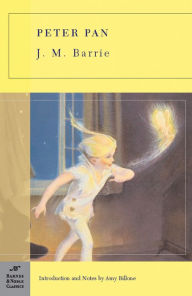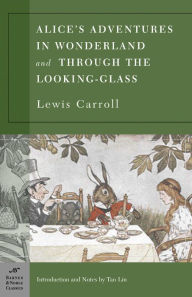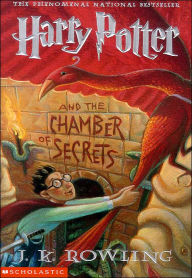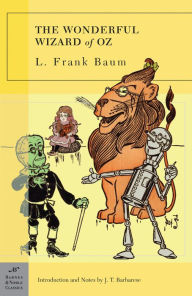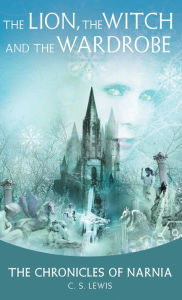The Sad, Strange Histories of Some of the Most Famous Kids in Literature
One thing that seems to unite all of us is an instinctual urge to protect children. Aside from our emotional reaction to the helpless, the small, and the innocent, children are also quite literally the future, so it makes sense whether or not you ascribe a moral quotient to the phenomenon. Which makes it interesting to note just how often tragedy involving children inspires delightful, happy-go-lucky literature. The following six examples include some of the most famous children characters in literature, yet they all have some very dark origin stories.
The Complete Tales of Winnie-the-Pooh (Barnes & Noble Collectible Editions)
The Complete Tales of Winnie-the-Pooh (Barnes & Noble Collectible Editions)
By
A. A. Milne
Illustrator
Ernest H. Shepard
In Stock Online
Hardcover
$36.00
$40.00
Christopher Robin from Winnie-the-Pooh, by A.A. Milne
Christopher Robin Milne is among the most literal inspirations for a character ever noted: the title character’s name, the premise, and indeed all of the characters in A.A. Milne’s Winnie-the-Pooh stories were inspired by his son and his collection of stuffed animals. The real Christopher Robin was initially happy to pitch in, offering up suggestions for new adventures, but relentless bullying at school soured the kid on the whole enterprise (although, if you check out a photo of the young Christopher, his haircut almost certainly had something to do with the teasing). He even took up boxing in order to shut down some of his worst tormentors. Unsurprisingly, for decades the real Christopher Robin despised the fictional one and only came to embrace the character he inspired much later in life.
Christopher Robin from Winnie-the-Pooh, by A.A. Milne
Christopher Robin Milne is among the most literal inspirations for a character ever noted: the title character’s name, the premise, and indeed all of the characters in A.A. Milne’s Winnie-the-Pooh stories were inspired by his son and his collection of stuffed animals. The real Christopher Robin was initially happy to pitch in, offering up suggestions for new adventures, but relentless bullying at school soured the kid on the whole enterprise (although, if you check out a photo of the young Christopher, his haircut almost certainly had something to do with the teasing). He even took up boxing in order to shut down some of his worst tormentors. Unsurprisingly, for decades the real Christopher Robin despised the fictional one and only came to embrace the character he inspired much later in life.
Peter Pan (Barnes & Noble Classics Series)
Peter Pan (Barnes & Noble Classics Series)
By
J. M. Barrie
Introduction
Amy Billone
In Stock Online
Paperback $7.95
John and Michael Darling from Peter Pan, by J.M. Barrie
Barrie’s Peter Pan is one of the most famous characters of all time—and in the original novel is famously savage, as Barrie’s whole point was that children are innocent, which means they’re innocent of everything, including a sense of right and wrong. Barrie’s creative process was almost certainly inspired by the death of his older brother David at age 14; Barrie’s mother never got over the shock and it profoundly (and negatively) affected his home life. John and Michael Darling (and the Lost Boys) were likely inspired by the five Llewelyn Davies brothers, the oldest of whom Barrie befriended when he met them in Kensington Gardens when they were boys. Their mother, upon learning that an adult man was regularly meeting with her children in secret, was, surprisingly, delighted, and became fast friends with Barrie as well. Both George and Michael are often cited as inspirations for Peter Pan himself, which makes their deaths at age 21, six years apart, all the more creepy,since he is, after all, a boy who never grows up.
John and Michael Darling from Peter Pan, by J.M. Barrie
Barrie’s Peter Pan is one of the most famous characters of all time—and in the original novel is famously savage, as Barrie’s whole point was that children are innocent, which means they’re innocent of everything, including a sense of right and wrong. Barrie’s creative process was almost certainly inspired by the death of his older brother David at age 14; Barrie’s mother never got over the shock and it profoundly (and negatively) affected his home life. John and Michael Darling (and the Lost Boys) were likely inspired by the five Llewelyn Davies brothers, the oldest of whom Barrie befriended when he met them in Kensington Gardens when they were boys. Their mother, upon learning that an adult man was regularly meeting with her children in secret, was, surprisingly, delighted, and became fast friends with Barrie as well. Both George and Michael are often cited as inspirations for Peter Pan himself, which makes their deaths at age 21, six years apart, all the more creepy,since he is, after all, a boy who never grows up.
Alice's Adventures in Wonderland and Through the Looking Glass (Barnes & Noble Classics Series)
Alice's Adventures in Wonderland and Through the Looking Glass (Barnes & Noble Classics Series)
By
Lewis Carroll
Introduction
Tan Lin
Illustrator
John Tenniel
Paperback $7.95
Alice from Alice’s Adventures in Wonderland, by Lewis Carroll
Everyone knows Alice was inspired by a real-life Alice Liddell. Carroll met the Liddells when Alice was just three years old, and initially befriended her brothers before turning his attention to Alice and her sister, eventually being inspired to spin the story of Alice in Wonderland in order to entertain the girls. What makes this potentially dark and twisty is the way the Liddell’s suddenly and mysteriously cut Carroll out in 1863, when Alice was 11 years old; Carroll’s diary has missing pages from that period, and he stopped visiting the Liddells for six months. While they did resume a relationship, it was never the same. There are plenty of dark theories as to exactly what caused this rift, but no one directly involved ever spoke of it, and it remains a mystery.
Alice from Alice’s Adventures in Wonderland, by Lewis Carroll
Everyone knows Alice was inspired by a real-life Alice Liddell. Carroll met the Liddells when Alice was just three years old, and initially befriended her brothers before turning his attention to Alice and her sister, eventually being inspired to spin the story of Alice in Wonderland in order to entertain the girls. What makes this potentially dark and twisty is the way the Liddell’s suddenly and mysteriously cut Carroll out in 1863, when Alice was 11 years old; Carroll’s diary has missing pages from that period, and he stopped visiting the Liddells for six months. While they did resume a relationship, it was never the same. There are plenty of dark theories as to exactly what caused this rift, but no one directly involved ever spoke of it, and it remains a mystery.
Harry Potter and the Chamber of Secrets (Harry Potter Series #2)
Harry Potter and the Chamber of Secrets (Harry Potter Series #2)
By
J. K. Rowling
Illustrator
Mary GrandPré
Paperback
$9.99
$10.99
Ron Weasley from Harry Potter, by J.K. Rowling
Perhaps not the darkest inspiration ever known, but J.K. Rowling has admitted that Ron Weasley is based on a real-life friend named Sean Harris who helped her through some low times. First, Harris was a beacon of hope and freedom during Rowling’s teenage years, because he owned a Ford Anglia (which fans will recognize as the Weasley’s car) and spirited her away from her stultifying home life. Later, Harris loaned her money for a better apartment during Rowling’s a time when she was in therapy, on public assistance, and struggling to write the first Potter book. No wonder she dedicated the second book to “Sean P.F. Harris, getaway driver and foulweather friend.”
Ron Weasley from Harry Potter, by J.K. Rowling
Perhaps not the darkest inspiration ever known, but J.K. Rowling has admitted that Ron Weasley is based on a real-life friend named Sean Harris who helped her through some low times. First, Harris was a beacon of hope and freedom during Rowling’s teenage years, because he owned a Ford Anglia (which fans will recognize as the Weasley’s car) and spirited her away from her stultifying home life. Later, Harris loaned her money for a better apartment during Rowling’s a time when she was in therapy, on public assistance, and struggling to write the first Potter book. No wonder she dedicated the second book to “Sean P.F. Harris, getaway driver and foulweather friend.”
The Wonderful Wizard of Oz (Barnes & Noble Classics Series)
The Wonderful Wizard of Oz (Barnes & Noble Classics Series)
By
L. Frank Baum
Introduction
J. T. Barbarese
Illustrator
William Wallace Denslow
Paperback
$8.99
$9.95
Dorothy Gale from The Wizard of Oz, by L. Frank Baum
Dorothy, the girl caught up in a tornado with her dog Toto and whisked off the magical land of Oz, also has a surprisingly tragic origin story. She’s very likely based on Baum’s own niece, Dorothy Louise Gage, who died when she was just five months old. Baum and his wife were very upset by her passing, and Baum may have chosen the name Dorothy for his character as a memorial of sorts, and as a way to comfort his wife by making the young Dorothy immortal in a sense. This also adds an element of spookiness to the way Dorothy is literally taken from her family in the book; from their point of view, there was a storm and Dorothy was nowhere to be found, leaving the obvious conclusion that she died—and making her adventures a comforting fiction for the grieving family.
Dorothy Gale from The Wizard of Oz, by L. Frank Baum
Dorothy, the girl caught up in a tornado with her dog Toto and whisked off the magical land of Oz, also has a surprisingly tragic origin story. She’s very likely based on Baum’s own niece, Dorothy Louise Gage, who died when she was just five months old. Baum and his wife were very upset by her passing, and Baum may have chosen the name Dorothy for his character as a memorial of sorts, and as a way to comfort his wife by making the young Dorothy immortal in a sense. This also adds an element of spookiness to the way Dorothy is literally taken from her family in the book; from their point of view, there was a storm and Dorothy was nowhere to be found, leaving the obvious conclusion that she died—and making her adventures a comforting fiction for the grieving family.
The Lion, the Witch and the Wardrobe (Chronicles of Narnia Series #2)
The Lion, the Witch and the Wardrobe (Chronicles of Narnia Series #2)
By
C. S. Lewis
Illustrator
Pauline Baynes
In Stock Online
Paperback $9.99
The Pevensie Kids from The Chronicles of Narnia, by C.S. Lewis
There’s was certainly something in the water between the mid-1800s and the mid-1900s that caused a lot of classic literature to be inspired by the misery of children. Lewis’ classic children’s books are often remembered for Aslan the untame lion, the talking animals, and the land of Narnia, where it is always Winter but never Christmas. What some forget is that the Pevensie children originally stumble onto Narnia because they have been evacuated from London to the country due to the air raids Germany was raining down on the city at the beginning of World War II—something that actually happened to three young girls named Margaret, Mary, and Katherine, sent to live in Lewis’ home, The Kilns. Lewis gained an appreciation for children he’d lacked before, and their presence inspired him to return to an old idea he’d been carrying around since his own childhood, which resulted in everyone’s favorite fantasy series. Just keep in mind the series was initially inspired by frightened children who were evacuated from a war zone into a stranger’s house. You’d go hide in a wardrobe, too.
The Pevensie Kids from The Chronicles of Narnia, by C.S. Lewis
There’s was certainly something in the water between the mid-1800s and the mid-1900s that caused a lot of classic literature to be inspired by the misery of children. Lewis’ classic children’s books are often remembered for Aslan the untame lion, the talking animals, and the land of Narnia, where it is always Winter but never Christmas. What some forget is that the Pevensie children originally stumble onto Narnia because they have been evacuated from London to the country due to the air raids Germany was raining down on the city at the beginning of World War II—something that actually happened to three young girls named Margaret, Mary, and Katherine, sent to live in Lewis’ home, The Kilns. Lewis gained an appreciation for children he’d lacked before, and their presence inspired him to return to an old idea he’d been carrying around since his own childhood, which resulted in everyone’s favorite fantasy series. Just keep in mind the series was initially inspired by frightened children who were evacuated from a war zone into a stranger’s house. You’d go hide in a wardrobe, too.

